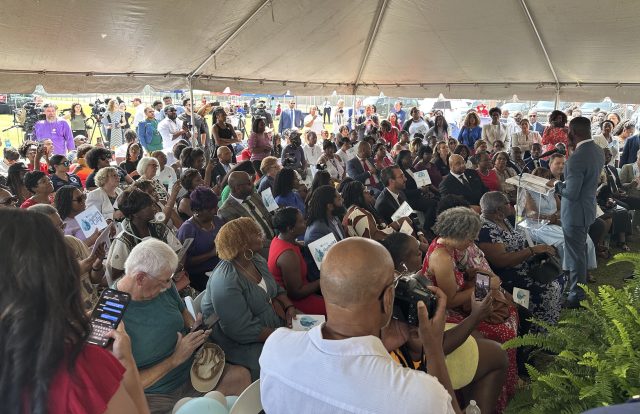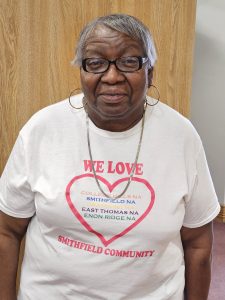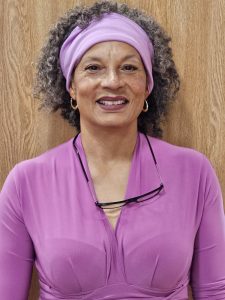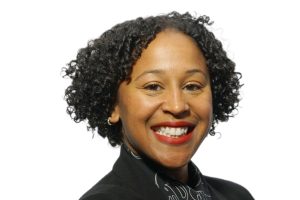
By Ryan Michaels
The Birmingham Times
Resident engagement strengthened the application that eventually led to the city of Birmingham securing a $50 million Choice Neighborhoods grant administered through the U.S. Department of Housing and Urban Development, said Dontrelle Young-Foster, director of the Housing Authority of the Birmingham District (HABD). While HUD only required that HABD conduct two meetings with residents of Smithfield Court, the authority held a total of 12 while developing the application.
“We knew that was very critical to the application, ensuring that our residents understood what this application means to the community and the neighborhood,” Young-Foster said.
Adrienne Reynolds, President of the Smithfield Community Advisory Committee, said the development is “long overdue and needed.” “I cannot remember, in my lifetime, the last time that a new house was even built in the Smithfield neighborhood,” said Reynolds, a 1975 graduate of A.H. Parker High School.

The new homes could bring in new families which are desperately needed to keep neighborhoods vibrant, Reynolds said.
“It’s designed to bring in families with growing children, … and when you bring in young families that’s going to be better in the long run, not only for the neighborhood, but for the schools surrounding and everything else,” Reynolds said.
Leola Scott, who has lived at her Smithfield home for 70 years, said she has avoided participation in the discussion about the Choice Neighborhoods grant.
“All they’re going to do is fix it up, so they can give the property to somebody else because I’ve been in this house since 1953, and my taxes have gone up ridiculous…,” Scott said.
Everett Ferguson, secretary of the College Hills neighborhood association, said the HABD and the city did not communicate with residents of the Smithfield community.
Ferguson said the 12 public meetings were mostly concentrated in hours when many residents would not be able to attend. Some of the public meetings, Ferguson said, were scheduled around noon, “which quite frankly, is not particularly the most feasible thing to attend if you have a job.”
“If you’re a retiree in Smithfield, or College Hills, of course you can come to a lot of meetings and talk about the grant…At the same time, parents that have children, people who are getting off from nine to five, it’s not particularly easy for them to maybe go to a meeting,” Ferguson said.
By not being able to attend those meetings, those residents were unable to learn about the plan, or to provide their opinions on it, who said in the future he’d like to see the various entities carrying out the development plan seek out more residents for guidance and resources.
Adrienne Pearson, president of the College Hills Neighborhood Association, said she is excited about what is to come and change is inevitable.

“There are going to be some people that don’t want any change, but life isn’t like that. We all have to learn how to change, and hopefully, change together to a positive light,” Pearson said.
With the plans for a new development, Pearson said she is hoping for retail, more families and other amenities like a community garden.
Pearson said she also hopes more residents will participate in the development process. “I do hope that more neighbors get involved with questions, participation, looking for solutions for the future,” she said.
Community Open Houses
Meghan Venable-Thomas, director of the Department of Community Development for the City of Birmingham, said the plan submitted to HUD in January of this year first got started after the city and HABD put together its “team”; a council made up of the city, Housing Authority of the Birmingham District, Birmingham City Schools, UAB and United Way of Central Alabama.
Within each of the task forces, Venable-Thomas said, committees were formed which included a wide variety of people from the community, including residents of the Smithfield community, which includes the Smithfield neighborhood, as well as College Hills and Graymont.

“Within each of those we have we built a body or a committee of folks to help us think about what could be brought to the table, what people were interested in supporting, what things they were already doing that could be a part of what is lifted up or just added to the neighborhood,” Venable-Thomas said.
October through November of 2022, many resident and community open houses were held, as well as specific meetings of neighborhood residents and meetings just for residents of Smithfield Court public housing.
In those meetings Young-Foster said residents were chiefly concerned with relocation, when and whether they would have to move from their homes at Smithfield Court, she said. She added that she is most proud of the one-to-one replacement that will be done at the public housing site.
That means all residents of the 456 occupied units will “have the opportunity to return to a revitalized, newly constructed community,” Young-Foster said.



